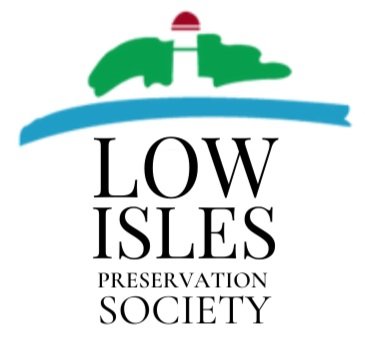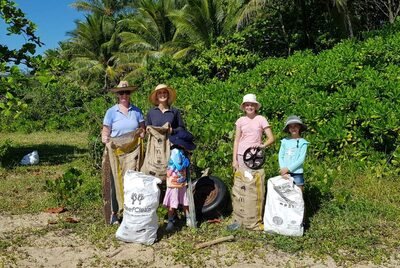Clear Message on How to Deal with Waste
Howard Salkow / Senior Journalist NEWSPORT
There is a clear message on how to deal with the waste you produce and its harmful effects if discarded and left to damage the environment.
Four volunteers with their heavily laden bags of waste collected. From left, Stacey Pont, Kath Anich, Tara Anich and Willow Glanfield.
This much was evident earlier this month on Clean Up Australia Day when a small army of volunteers braved the oppressively hot conditions to do their bit and help clean the central and northern sections of beautiful Wonga Beach.
And at the end of the day, the statistics were bewildering: from a few hours, there were 427 bottle caps and lids; 44 single use drink bottles; 18 toothbrushes and combs; 79 pieces of polystyrene packaging … and the list goes on.
Renata Musson, secretary of the Low Isles Preservation Society (LIPS), had a clear message.
“You've heard it all before. Every little bit counts in terms of the waste you produce: whether you choose to avoid, reuse or recycle; whether you pick it up and dispose of it responsibly if you can.
“Every piece of waste that we dispose of thoughtfully is potentially one less bit of debris that will pollute our waterways and ultimately harm us all. And if you do have the time to join a local clean-up. Any time you give can make a difference,” she said.
Coast lines deteriorating
In responding to whether our coastlines are getting worse, she said although not an authority on this, considering the age of convenience that we live in and how cheap plastics are, it's not hard to surmise that this is probably the case.
“No doubt Covid will have contributed enormously in some areas with the increased use of PPE which is largely plastic based.
“Wonga Beach is a fortunate place that clearly has a lot of locals who care about their environment. It's why we focused our efforts on the less-visited/populated central and northern sections where there was clearly a lot of foreign debris that had travelled some distance, or come from vessels.”
Ms Musson said it's not just about the rubbish removed, but what we learn from the experience.
“Counting of debris on Clean Up Australia Day has been logged with AMDI (the Australian Marine Debris Initiative) database through Tangaroa Blue Foundation, and is shared with state and federal agencies such as the CSIRO to assist with litter mapping.
“Take a look at a single piece of rubbish in the image of the Balloon Debris. Apparently this is what happens to helium balloons when they escape into the atmosphere and eventually explode. Imagine how this might be mistaken for food by marine creatures. Food for thought.”
The clean-up crew comprised LIPS volunteers: Kath Anich and daughter Tara (8), her friend Willow Glanfield (7), Stacey Pont and daughter Maddi (11), Julie Norman, Josh Gibson, Jillian Bickford, Ross Crommelin, and myself and husband Colin, Hannah Kennedy from Tangaroa Blue Foundation and Ingrid Naschwitz.
Ingrid Naschwitz and Hannah Kennedy on the beach with their collection bags.
Volunteers (from left) Julie Norman, Jill Bickford and Ross Crommelin.




